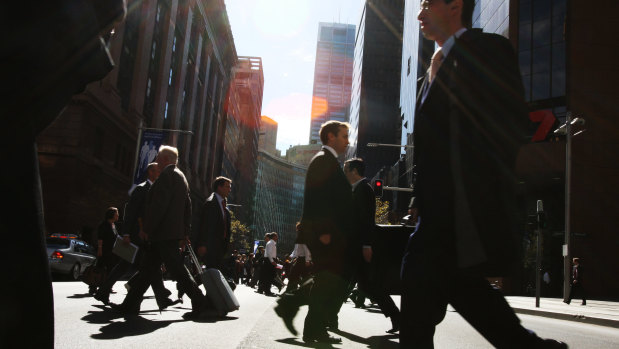This was published 5 years ago
Sydney building tests positive for legionnaires' disease, but won't be named
By Esther Han
Health authorities have decided against identifying the building in Lidcombe with a contaminated water cooling system that may have caused the latest legionnaires' disease outbreak, attracting criticism.
Amid the outbreak that affected five people in the past 2½ weeks, the Western Sydney Local Health District (WSLHD) warned anyone who spent time in the Lidcombe CBD to be vigilant of symptoms such as fever, chills and a cough.
Its investigators sampled 22 water cooling towers and water fountains and found legionella bacteria at "one particular site".
Five people, including a man in his 70s and a woman in her 80s, developed the pneumonia-like symptoms and were hospitalised. Three have been discharged, and two are in a stable condition.
In a briefing note to the Labor Opposition, the WSLHD said it acted immediately and cleaned the affected site, "controlling" any risk.
It said it wouldn't name the building, arguing "such announcements risk complacency, as people may assume it is the only site of risk".
But opposition health spokesman Walt Secord urged the government to name the site, saying the community had a right to know.
"No one benefits from a cover-up. It is customary for NSW Health to report the location of the incidents as part of their full investigations to protect the wider community," he said.
"This is important because if someone shows symptoms then they can seek urgent medical advice."
However, WSLHD's Shopna Bag told the Herald that authorities do not routinely name contaminated sites.
She said there was no one site visited by all five patients, and some came no closer than 500m to the site of the contaminated tower.
The public alerts named Lidcombe CBD and its industrial area, as this zone covered the common areas visited by all five patients, including other buildings and water sources up to 500m around each location.

Legionella bacteria can spread by water vapour from water cooling systems in buildings.Credit: Fairfax Media
"As legionella bacteria can spread across kilometres, knowing the site of suspected contamination does not assist the public to know if they have been potentially exposed," Dr Bag said.
"This distance can also be affected by the direction of plumes and prevailing weather conditions such as temperature, wind direction, sunlight and relative humidity."
It was up to the Chief Health Officer to determine whether there was a risk to public safety, and in regards to the Lidcombe case, she concluded there was no ongoing risk.
Dr Harriet Whiley, an environmental health lecturer at Flinders University, said NSW health authorities had made the right call because a site testing positive did not mean it was the source of the outbreak.
"There's also a high incidence of false negative results, so there's all this uncertainty when you're trying to identify the cause," she said.
"Those aerosols from the cooling tower can travel up to 2km, so the idea of trying to pinpoint the source is difficult."
However, Mr Secord said with the onset of a hot summer, the state government needed to be more vigilant in monitoring air-cooling towers and alerting the community.
So far, there have been 98 cases this year in NSW.
There were 110 cases on average each year between 2013-17, compared to 98 between 2008-12.
Legionnaires' disease occurs after a person breathes in contaminated water vapour or dust.
The legionella bacteria can contaminate airconditioning cooling towers, whirlpool spas and even shower heads. It cannot spread from person to person.
Earlier this year, NSW Health issued guidelines to reduce the community’s risk of legionnaires’ disease, requiring building owners to conduct monthly tests on cooling towers and notify high levels of legionella and other bacteria to local councils.